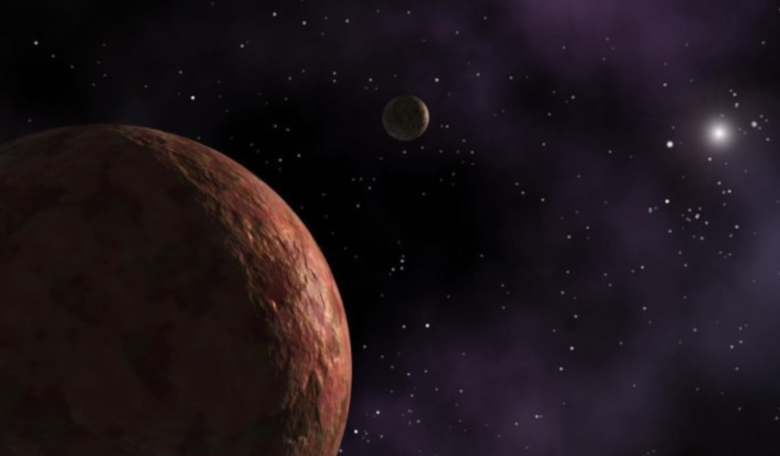Using an instrument that was initially designed to search for the elusive substance which makes up around 80 percent of the Universe – dark matter – scientists have found 300 minor planets located in the far reaches of the Solar System, including 139 new objects that were not previously published. This new method of finding distant objects could aid in future searches for other undiscovered planets and for the hypothetical Planet Nine.
The objects found in this bumper crop of discoveries are known as trans-Neptunian objects (TNOs). TNOs are any minor planet in the Solar System that orbits the Sun at a greater average distance than the planet referred to in their title, Neptune.
The first TNO to be discovered was Pluto back in 1930 and since then, other sizeable bodies found lurking in the frigid depths of space have included Haumea, Makemake, Gonggong and Eris, which incidentally is more massive than Pluto.
To find this latest batch of TNOs, the team of astronomers, led by graduate student Pedro Bernardinelli and professors Gary Bernstein and Masao Sako at the University of Pennsylvania used data from the Dark Energy Survey (DES); a project to understand the nature of dark energy by collecting high-precision images of the southern sky.
January marked the sixth year that DES has been collecting data on this phenomena and while the survey was not specifically designed with TNOs in mind, the sheer scope of coverage made possible by DES made it particularly good at finding new objects beyond the farthest known planet from the Sun.
"The number of TNOs you can find depends on how much of the sky you look at and what's the faintest thing you can find," says Bernstein.
Unlike TNOs, the objects DES is designed to study – galaxies and supernovas – are magnitudes larger than the minor planets Bernardinelli and colleagues decided to track, plus they don’t really move around that much, so the team had to develop a new way to track the TNOs movement through the skies.
"Dedicated TNO surveys have a way of seeing the object move, and it's easy to track them down," says Bernardinelli. Figuring out a way to recover those movements was a key aspect of this study he added.
The mammoth undertaking started with Bernardinelli trawling through a dataset of 7 billion "dots,” – the culmination of four years worth of DES data. These were all of the possible objects detected by the software that were above the image's background levels.
DES uses state-of-the-art CCDs (charge-coupled devices), similar to but much more sensitive than those in ordinary digital cameras that scientists at Lawrence Berkeley National Laboratory (LBNL) specifically designed to observe red light from distant galaxies. This allows DES to see faint and/or distant objects that consumer-grade cameras would not be able to detect.
In order to start weeding out the real objects from potential imitations, Bernardinelli started culling the 7 billion dots down to 22 million “transient” objects by removing any that were present on multiple nights, such as supernovas, stars, and galaxies.
To anticipate where those objects might appear next in the night sky, Bernardinelli traced their movements by using nearby pairs or triplets of detected objects as a point of reference, sort of like a massive game of “connect the dots.”
This left around 400 candidates that were seen over at least six nights of observation. Then it was a case of verifying their results. “We have this list of candidates, and then we have to make sure that our candidates are actually real things," Bernardinelli says.
Substantiating whether a speck of light on a CCD was a real TNO or not, required the researchers to go back to the original dataset and see if they could find more images of the object in question.
"Say we found something on six different nights," Bernstein says. "For TNOs that are there, we actually pointed at them for 25 different nights. That means there's images where that object should be, but it didn't make it through the first step of being called a dot."
To ease the process, Bernardinelli developed a way to stack multiple images to create a sharper view, which in turn helped determine whether a detected object was a real TNO.
The long slog of method-development and analysis over many months paid off as the researchers found 316 TNOs, including 245 discoveries made by DES and 139 new objects that were not previously published.
With only 3,000 objects currently known, this DES catalog, which is listed in the paper recently published in The Astrophysical Journal Supplement Series, represents 10 percent of all known TNOs.
This is possible just the tip of the iceberg as upcoming astronomy surveys, including the new Vera C. Rubin Observatory, will survey the entire southern sky and will be able to detect even fainter and more distant objects than DES.
A process that will now be made easier thanks to the methods developed by Bernardinelli.
"Many of the programs we've developed can be easily applied to any other large datasets, such as what the Rubin Observatory will produce," Bernardinelli says.
The searches could also help determine whether Planet Nine, a hypothesised Neptune-sized planet that's thought to inhabit space beyond Pluto, really exists or not.
"There are lots of ideas about giant planets that used to be in the solar system and aren't there anymore, or planets that are far away and massive but too faint for us to have noticed yet," says Bernstein.
"Making the catalog is the fun discovery part. Then when you create this resource; you can compare what you did find to what somebody's theory said you should find."











